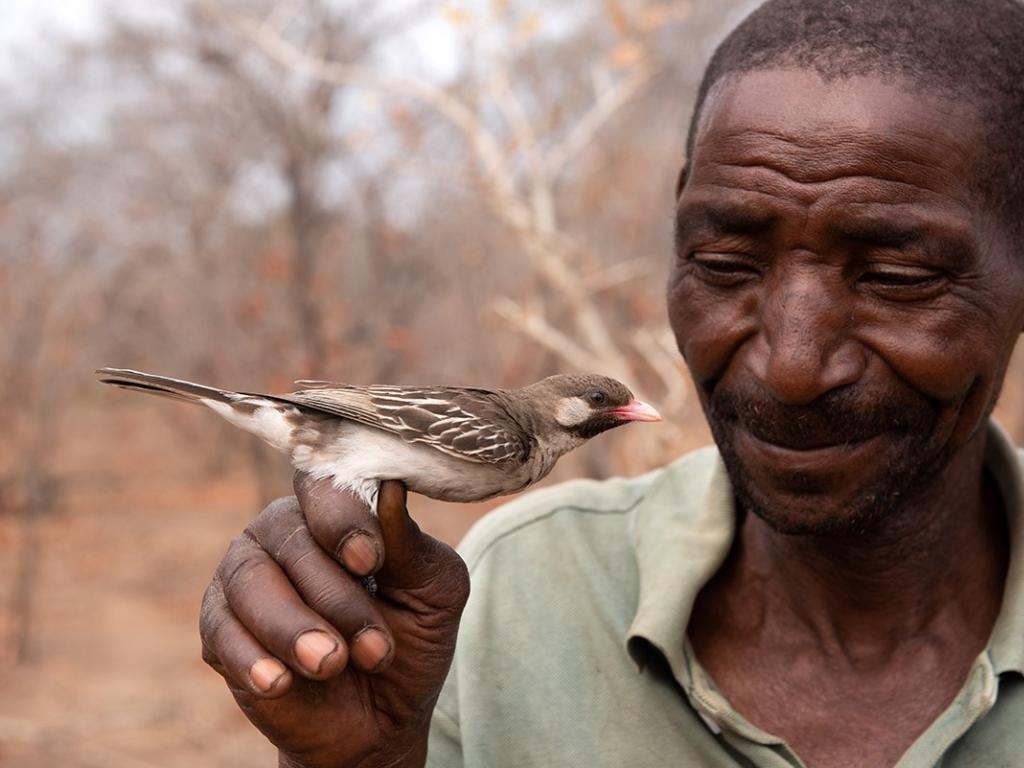New paper on human-honeyguide cooperation and communication

Greater Honeyguides are wax-eating African birds that lead people to bees’ nests, so that we humans can open the nest using fire and tools, revealing honey for us and wax for the bird. To attract honeyguides and to coordinate a cooperative honey-hunt, human honey-hunters signal to honeyguides using specialised calls that vary culturally across Africa, from trills, grunts and words, to different types of whistles. The new study shows using field experiments in Mozambique and Tanzania that honeyguides know and prefer the specialised calls of the local human culture they interact with, compared to those of a foreign culture. This implies that honeyguides can adjust to human cultural diversity, increasing the benefits of cooperation both people and birds: effective communication between species makes honeyguides more likely to interact with a cooperative human (and so get more wax), and humans more likely to interact with a cooperative honeyguide (and so get more honey). It also suggests that communication between humans and other species can assign meaning to arbitrary sounds in a similar manner to human language.
The image shows Yao honey-hunter Seliano Rucunua, one of the many honey-hunters who inspire and support our long-term research on human-honeyguide cooperation, and a male Greater Honeyguide briefly captured for research in the Niassa Special Reserve, Mozambique.
Please see: “Culturally determined interspecies communication between humans and honeyguides” by Claire Spottiswoode and Brian Wood, published in the journal Science on 7 December 2023.
